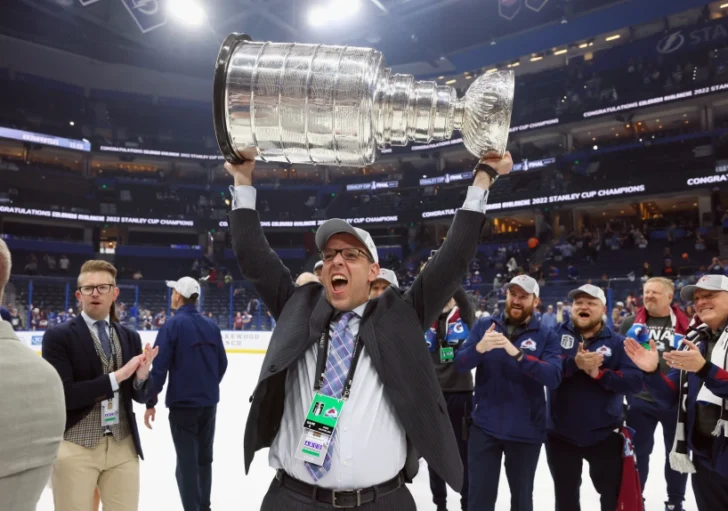DENVER — Chris MacFarland’s first trade deadline for the Avalanche in the general manager chair is expected to be a big one. Though the first-year GM did try to downplay the Avs’ interest in making big, ground-breaking moves like many of the Eastern Conference teams have over the past several weeks.
“It doesn’t change anything for us,” MacFarland said Monday before Colorado’s matchup against Vegas at Ball Arena. “There have been some big trades and some of those series are shaping up to be pretty exciting series, but it doesn’t change our approach as we move along the next few days.”
The biggest question heading into the season was the second-line center position. After Nazem Kadri departed, MacFarland and head coach Jared Bednar both said they’d give young center Alex Newhook every opportunity to grab a hold of the spot. Though that hasn’t necessarily gone as planned, center J.T. Compher has stepped in admirably since October.
Compher has a career-high 40 points in 57 games and has 25 more games to build on it. MacFarland isn’t necessarily pressed on adding at that particular position unless it makes sense.
“We’re very comfortable with not just J.T. We have Alex Newhook who can play there, Evan Rodrigues has played there, we know Mikko can slide in there. We have a lot of flexibility in the middle of the ice for Coach Bednar to utilize as he sees fit,” he said.
“I don’t think we’re focused in on any one positional silo. If there’s something that makes sense, whether it’s at forward or D, we’ll look at it as we always do through the multiple lenses that we always do from,” MacFarland explained. “First and foremost a player perspective. Does it make us better, cap, that sort of thing.”
The cap is perhaps the biggest wildcard. The Avs have draft capital in future years that they can use to acquire players. They also have several mid-level prospects at their disposal. But the salary cap could steer in any number of ways depending on the health of two of their higher-paid roster players.
Gabriel Landeskog and Erik Johnson.
If either or both are not ready to return before the playoffs, MacFarland can place them on long-term injust reserve and utilize their cap space to add. They would then be eligible to return for the playoffs — if healthy — because the salary cap is no longer a factor in the postseason.
The key takeaway is, MacFarland is unsure if or when they’ll be back.
“Gabe is our captain. He’s a really important player for us in so many areas, and he’s missed the whole season,” MacFarland said. “Getting him back at any point in time is going to be a massive, massive upgrade for us and really important in so many ways. Erik played all year and we miss him on the back end. Hopefully, we’ll be able to see them at some point.”
Landeskog’s timeline seems like a bigger question mark than it has been the entire season.
“He’s doing everything he can to get back, and we’re very hopeful that he will at some point,” MacFarland added.
Other top teams around the league that are as cap-strapped as the Avs expect to be next season have done an admirable job of adding depth players at reasonable cap numbers that carry term into at least next season. Tampa Bay has famously made a living off of this tactic, acquiring Blake Coleman and Barclay Goodrow in 2020 and Brandon Hagel in 2022. Toronto also made a similar move earlier on Monday, bringing in defenseman Jake McCabe ($2 million AAV until 2025) and Sam Lafferty ($1.15 million AAV until 2024).
The Avs would be smart to do something like this. And if it fits what they’re looking for, MacFarland says they won’t shy away from it. Even if a deal of this stature could cost his club their 2023 first-round draft pick.
“You look at it two ways. If you don’t have term, then depending on how much the cap goes up, there could be advantages for us. And if they do have term then we have to look at how the puzzle pieces fit together and that impact on other things that we may look to do or not do,” he said. “We’ve got to be careful based on the initial thought that the cap is going to go up a million dollars. That’s not a real big chunk. So we’ve got to be mindful of what we do in that regard if they do have term.
“Again though, if it makes sense – and it’s probably going to sound like I’m repeating – if it makes sense and it makes us better through all those lenses, then it’s not something that we’ll shy away from.”



